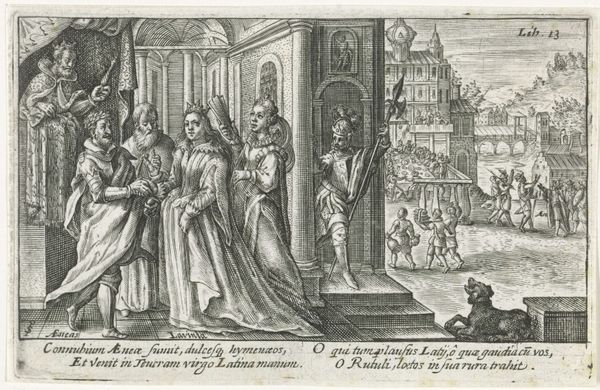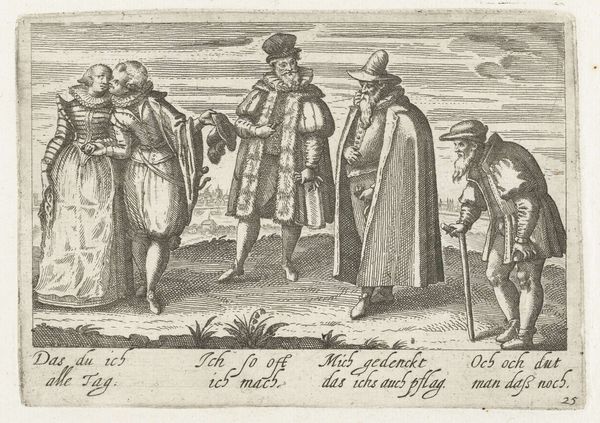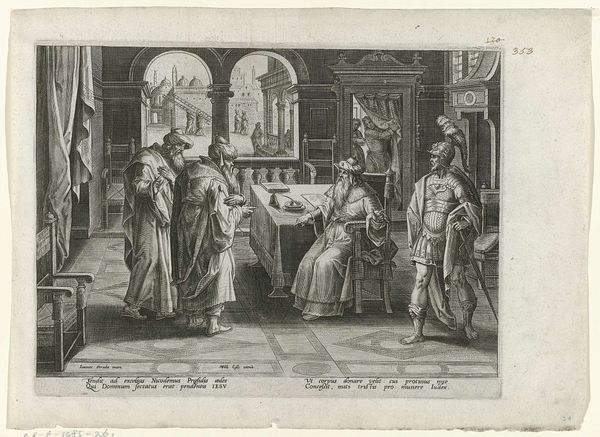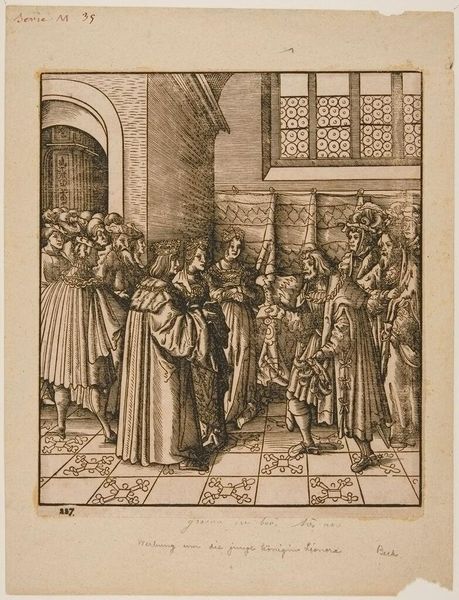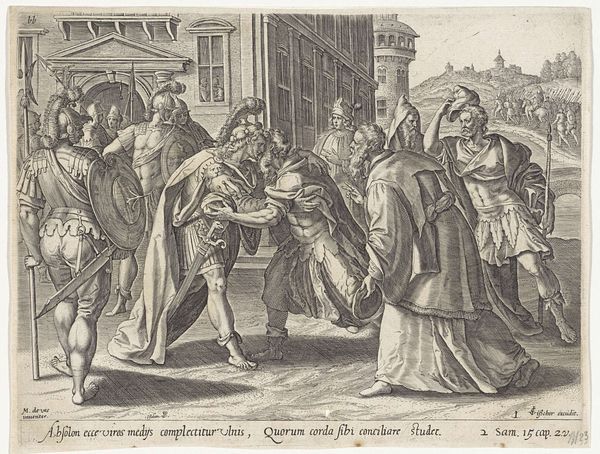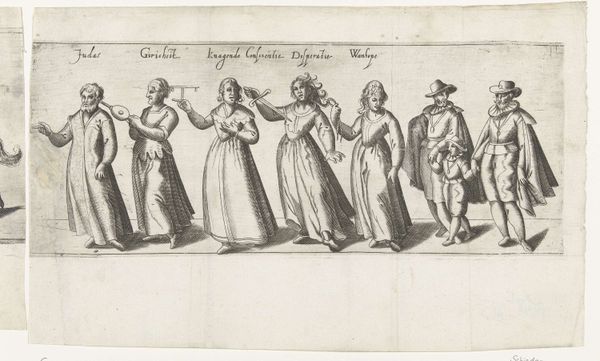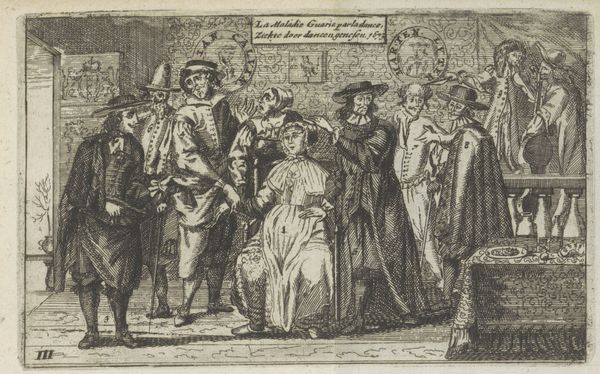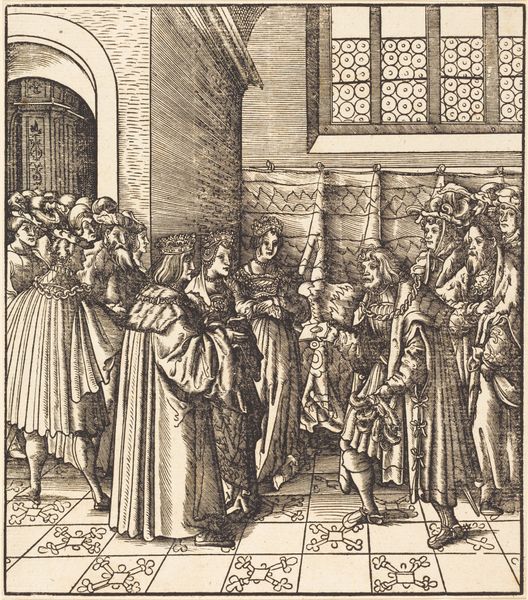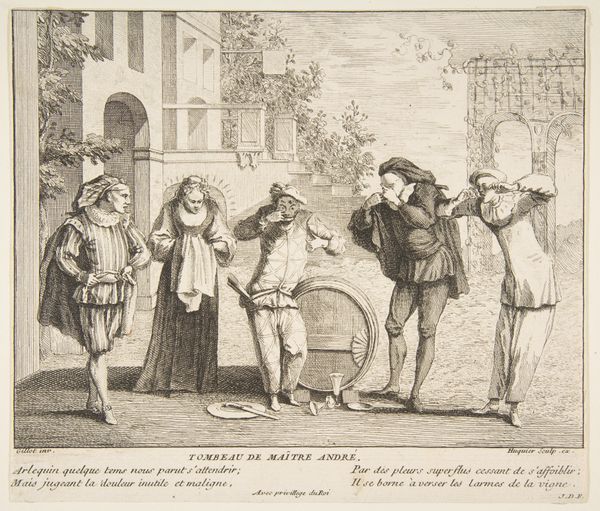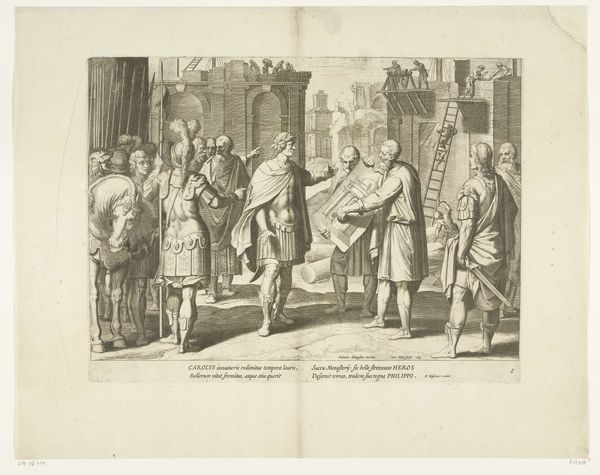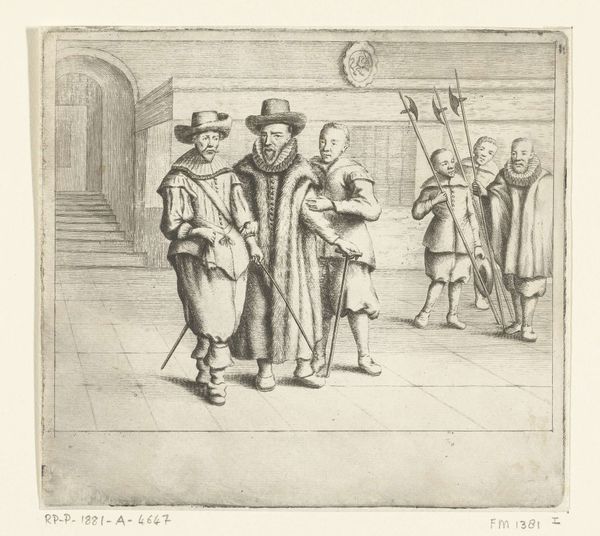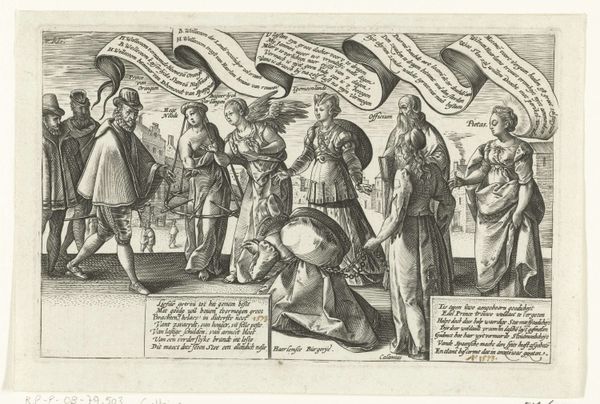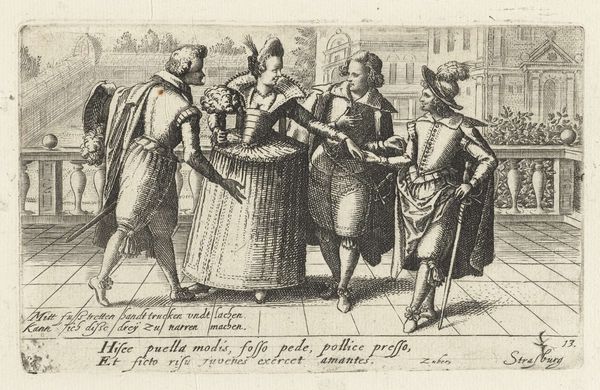
Joodse koopman, priester en een Jezuïet proberen een vrouw hun gedachtegoed en waar te verkopen 1608
0:00
0:00
print, engraving
#
narrative-art
#
baroque
# print
#
old engraving style
#
figuration
#
genre-painting
#
engraving
Dimensions: height 97 mm, width 137 mm
Copyright: Rijks Museum: Open Domain
Curator: This engraving, "Joodse koopman, priester en een Jezuïet proberen een vrouw hun gedachtegoed en waar te verkopen" – which translates to “Jewish merchant, priest, and a Jesuit trying to sell a woman their ideas and wares"– was created by Jacob van der Heyden in 1608. Editor: It immediately strikes me how crisp the lines are for such an old print. And what an odd composition—the stark checkerboard floor almost seems to push the figures forward. Curator: The composition does more than just aesthetic work; the setting places this scene of attempted persuasion within a larger social commentary on religious and economic influences. What roles do these male figures represent? And what does it say about the status of women that each wants to "sell" to her something? Editor: If we focus on the structure, you'll notice the almost symmetrical grouping around the central female figure, drawing your eye right to her face. Her expression is wonderfully ambiguous, isn't it? Curator: Yes, there’s an undeniable power dynamic. Notice the way they each offer her a different object: a rosary, a contract, trinkets… These symbols embody systems and societal powers that exert a continuous pressure. How much autonomy does the woman have in this exchange? Editor: The formal balance does lend to a feeling of entrapment. I hadn't quite seen it that way initially. However, when viewing each item through the perspective you've offered, the reading changes: The density of the black ink used for their clothing further conveys weight. Curator: And that weight is, quite literally, a historical one, reflective of societal and cultural impositions during the Baroque era. Think about the witch trials and economic shifts...this scene embodies so much! Editor: Indeed. Seen as a formal piece, it’s a study in contrasts, but analyzed through a sociohistorical lens, a narrative unfolds, and layers of commentary become so interesting! Curator: Exactly! Appreciating it through an intersectional lens makes this piece far more meaningful. The print provides an immediate look into these 17th-century dynamics!
Comments
No comments
Be the first to comment and join the conversation on the ultimate creative platform.
